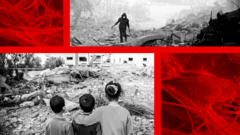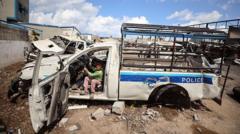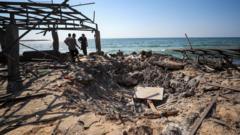A recent report reveals that ongoing military operations in Gaza have unearthed a serious public health risk as asbestos fibers, a notorious carcinogen, become airborne amidst the city’s rubble. The United Nations Environment Programme (UNEP) has pointed out that much of the debris resulting from bombings may contain asbestos, a material once commonly used in construction that has been outlawed in many countries due to its health risks. In Gaza, the situation is particularly dangerous as about 2.3 million tons of contaminated debris could pose significant risks to the densely populated region where the 2023 conflict has already devastated communities.
**Silent Dangers: The Asbestos Crisis in Gaza's War-Torn Rubble**

**Silent Dangers: The Asbestos Crisis in Gaza's War-Torn Rubble**
As military conflicts continue in Gaza, a hidden threat of asbestos exposure looms large over the population, endangering their long-term health.
Experts warn that the dangers of asbestos are compounded by the immediate threats of violence, leading to a general lack of awareness and concern among the affected population. The psychological and physical consequences of prolonged exposure to airborne asbestos fibers can manifest decades later, with diseases such as mesothelioma, asbestosis, and various forms of lung cancer making long-term health a significant concern. As reconstruction efforts are discussed, professionals worry that improper handling of the asbestos-infused rubble could lead to further health crises ever after the conflict concludes.
The implications of this disaster are profound, as health experts insist that without adequate measures taken to manage and mitigate exposure, future generations may face a public health emergency far beyond the immediate trauma of war. The international community is now faced with the challenge of addressing both the urgent needs in Gaza and the looming threat posed by asbestos.
The implications of this disaster are profound, as health experts insist that without adequate measures taken to manage and mitigate exposure, future generations may face a public health emergency far beyond the immediate trauma of war. The international community is now faced with the challenge of addressing both the urgent needs in Gaza and the looming threat posed by asbestos.



















